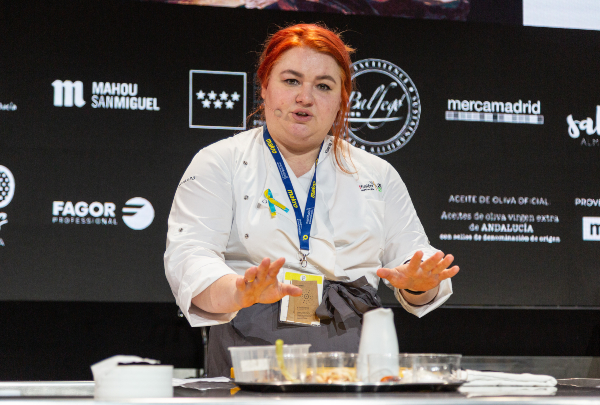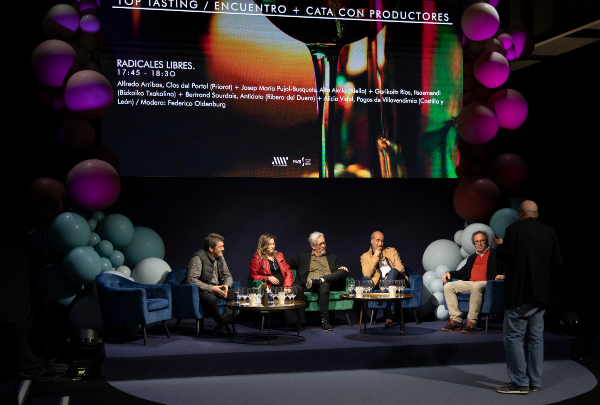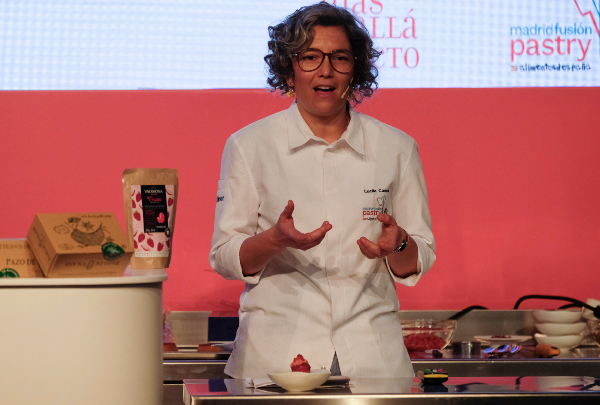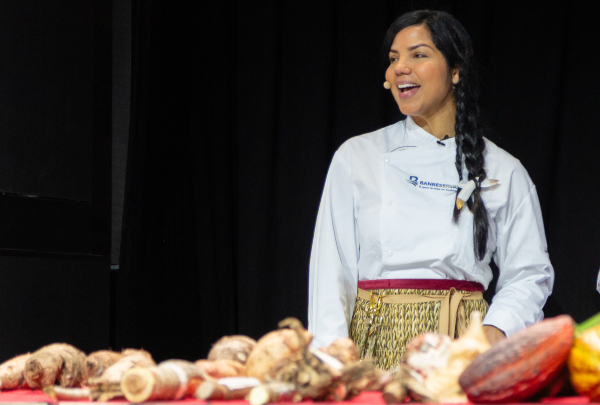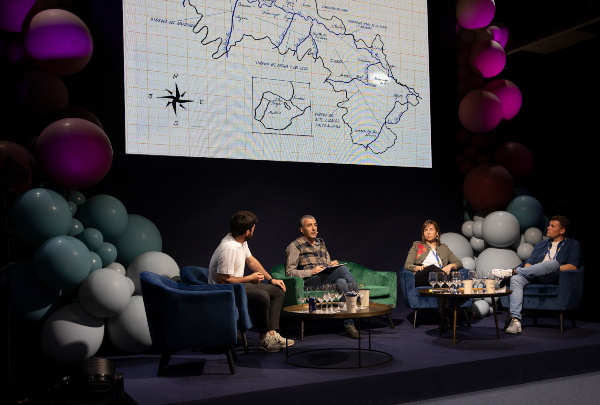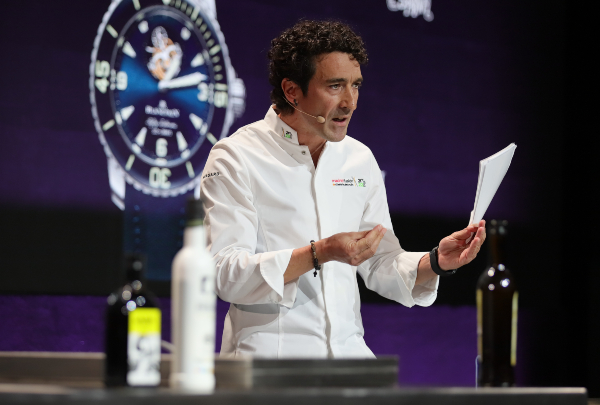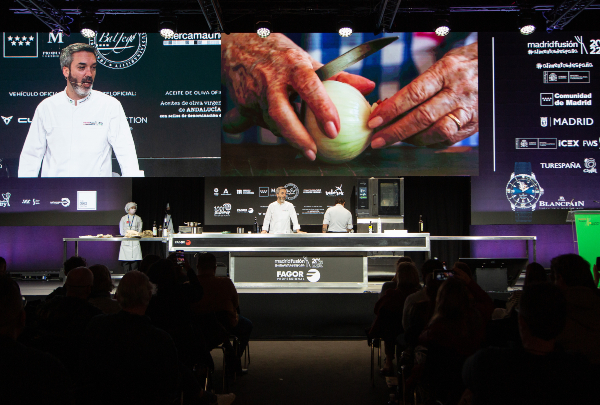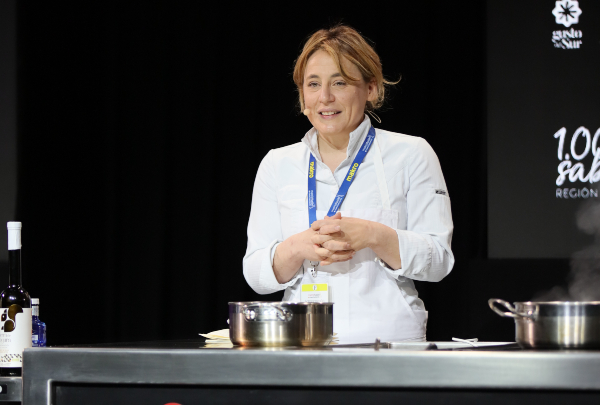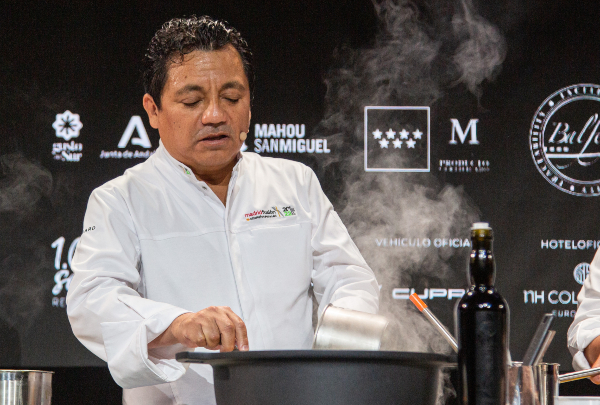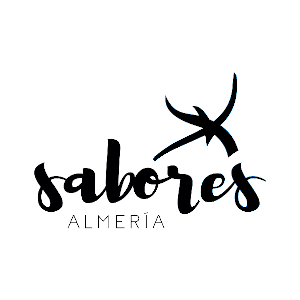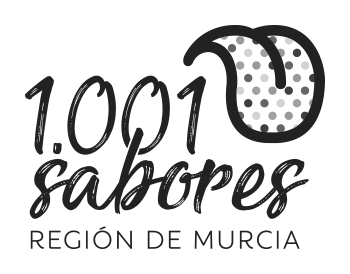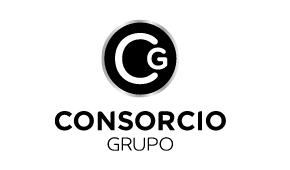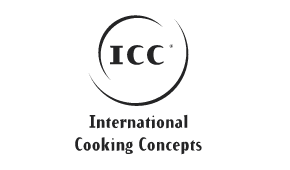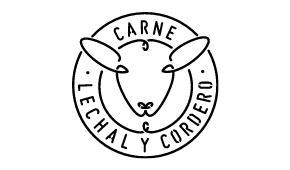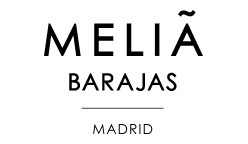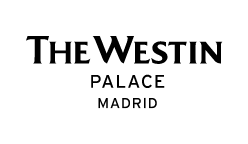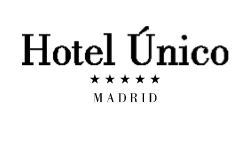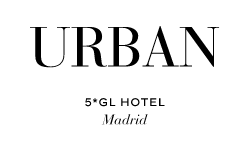News
A focus on the ingredient – and beyond – on the final day of Madrid Fusión 2022
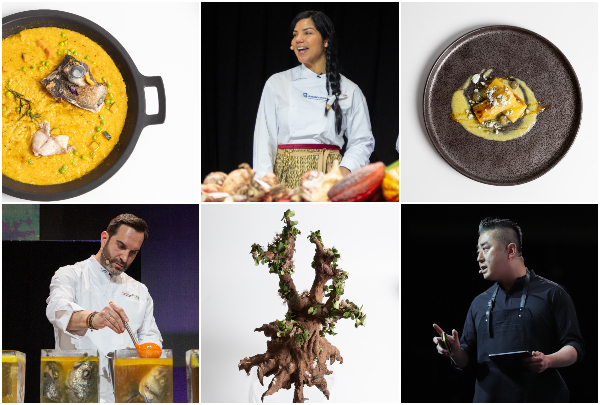
The 2022 edition of Madrid Fusión Alimentos de España closed with a strong line-up of international chefs who addressed sourcing, sustainability and cooking with seasonal ingredients.
As the 2022 edition, and 20th anniversary celebration, of Madrid Fusión Alimentos de España drew to a close, international chef profiles, from Japan to Portugal, shared their philosophy around valuing and cooking with high quality ingredients and being inspired by the terroir and the people who surround them.
From Japan, Hisato Hamada outlined how he made the change from a career in cinema to starting Wagyumafia, a movement to spread the message of wagyu beef around the world in his presentation titled The craftsmanship behind wagyu.
He appeared on stage at Madrid Fusión on the sixth birthday of Wagyumafia and spoke of how the exclusive and expensive beef had changed his life when he connected with a farmer who asked him to act as a bridge between producers and consumers. To date, he has visited 87 countries to promote wagyu with his concept and opened 14 restaurants in Tokyo and Hong Kong with another to open in Sydney soon.
“There is a ‘before’ and ‘after’ Wagyumafia. Before you would sit in a cold restaurant for hours to be served a small piece of meat. I moved away from the old-fashioned style; we introduced a party atmosphere and made wagyu about fun and meeting new friends,” he said.
Addressing hyper local sourcing and seasonality, Antonia Klugmann of L’Argine a Vencò* in Italy described how sustainability runs at the core of her restaurant. In a presentation titled The feel of what is local she outlined a focus on using local ingredients and implementing a thoughtful approach to achieve minimum waste while exploring what nature around the restaurant can offer.
Through her cooking on stage, she demonstrated how she replaces ingredients in dishes that are not in season with alternatives that may at first glance seem different. As an example, in the preparation of the classic Italian dish panzanella, she described how she used yellow kiwis in place of tomatoes at times of year when the kiwis are plentiful but tomatoes are not.
Her presentation kept a firm focus on putting quality ingredients at the centre of any dish.
“I often ask myself, ‘what is fine dining?’ and the answer doesn’t have to be a perfect technique, but it must be a dish made with a beautiful product,” she said. “The dishes have to communicate on their own. Conveying a season through the medium of the dish is fundamental for me; that is what is at the core of my approach to the job and the most honest expression of how I feel in that moment.”
Henrique Sa Pessoa from Alma** in Lisbon explained how a desire to return to his roots took him to re-exploring and re-inventing a classic ingredient of his home country when he returned to Portugal after travelling the world.
In his presentation, titled Returning to Portuguese cod: from tradition to the future, he shared a desire to focus on simple dishes cooked to the highest standards.
Cooking with the Portuguese cod – bacalao – which is saltier and drier than cod outside southern Europe, he has elevated and refined traditional dishes as he leans on techniques and influences from other countries. On stage he cooked his own version of the pil pil salsa – in a twist on the famous dish from the Basque Country he has worked with the collagen of the fish instead of using oil as the base, as an example of the way he works.
“As chefs we often assume that people don’t want to eat the very simple dishes, but that is wrong. The more experience I have the more I want to return to the simple ingredients and cook simple dishes,” he said.
Returning to the stage at Madrid Fusión Alimentos de España for another year, from Larrabetzu in the Basque Country Eneko Atxa of Azurmendi*** shared an intimate and personal presentation with the audience.
This year he chose not to cook any dishes, but instead dedicated the session, titled The poetry of a territory, to pay homage to the local area in his region where he finds inspiration for his food.
“To ask the question, ‘What is Azurmendi?’ is to look at myself in the mirror, stripped back and open,” he said. “We cook Basque cuisine in tune with the local territory because all I know is to cook food that absorbs from what I have lived, from my area and from my family.”
On the third and final day of Madrid Fusión Alimentos de España the main auditorium also heard from Camila Ferraro, chef and Robert Tetas, sommelier at Sobretablas, Sevilla, España; Mario Sandoval, chef at Coque**, Madrid, Spain; Héctor Solís, chef at Fiesta, Lima, Peru; Luis Alberto Lera, chef at Lera*, Castroverde de Campos, Zamora, Spain; Chef Tita, chef at Morisoñando, Dominican Republic; José Álvarez, chef at La Costa*, El Ejido, Almería, Spain, Javier Brichetto, chef at Piantao, Madrid, Spain.
From Japan, Hisato Hamada outlined how he made the change from a career in cinema to starting Wagyumafia, a movement to spread the message of wagyu beef around the world in his presentation titled The craftsmanship behind wagyu.
He appeared on stage at Madrid Fusión on the sixth birthday of Wagyumafia and spoke of how the exclusive and expensive beef had changed his life when he connected with a farmer who asked him to act as a bridge between producers and consumers. To date, he has visited 87 countries to promote wagyu with his concept and opened 14 restaurants in Tokyo and Hong Kong with another to open in Sydney soon.
“There is a ‘before’ and ‘after’ Wagyumafia. Before you would sit in a cold restaurant for hours to be served a small piece of meat. I moved away from the old-fashioned style; we introduced a party atmosphere and made wagyu about fun and meeting new friends,” he said.
Addressing hyper local sourcing and seasonality, Antonia Klugmann of L’Argine a Vencò* in Italy described how sustainability runs at the core of her restaurant. In a presentation titled The feel of what is local she outlined a focus on using local ingredients and implementing a thoughtful approach to achieve minimum waste while exploring what nature around the restaurant can offer.
Through her cooking on stage, she demonstrated how she replaces ingredients in dishes that are not in season with alternatives that may at first glance seem different. As an example, in the preparation of the classic Italian dish panzanella, she described how she used yellow kiwis in place of tomatoes at times of year when the kiwis are plentiful but tomatoes are not.
Her presentation kept a firm focus on putting quality ingredients at the centre of any dish.
“I often ask myself, ‘what is fine dining?’ and the answer doesn’t have to be a perfect technique, but it must be a dish made with a beautiful product,” she said. “The dishes have to communicate on their own. Conveying a season through the medium of the dish is fundamental for me; that is what is at the core of my approach to the job and the most honest expression of how I feel in that moment.”
Henrique Sa Pessoa from Alma** in Lisbon explained how a desire to return to his roots took him to re-exploring and re-inventing a classic ingredient of his home country when he returned to Portugal after travelling the world.
In his presentation, titled Returning to Portuguese cod: from tradition to the future, he shared a desire to focus on simple dishes cooked to the highest standards.
Cooking with the Portuguese cod – bacalao – which is saltier and drier than cod outside southern Europe, he has elevated and refined traditional dishes as he leans on techniques and influences from other countries. On stage he cooked his own version of the pil pil salsa – in a twist on the famous dish from the Basque Country he has worked with the collagen of the fish instead of using oil as the base, as an example of the way he works.
“As chefs we often assume that people don’t want to eat the very simple dishes, but that is wrong. The more experience I have the more I want to return to the simple ingredients and cook simple dishes,” he said.
Returning to the stage at Madrid Fusión Alimentos de España for another year, from Larrabetzu in the Basque Country Eneko Atxa of Azurmendi*** shared an intimate and personal presentation with the audience.
This year he chose not to cook any dishes, but instead dedicated the session, titled The poetry of a territory, to pay homage to the local area in his region where he finds inspiration for his food.
“To ask the question, ‘What is Azurmendi?’ is to look at myself in the mirror, stripped back and open,” he said. “We cook Basque cuisine in tune with the local territory because all I know is to cook food that absorbs from what I have lived, from my area and from my family.”
On the third and final day of Madrid Fusión Alimentos de España the main auditorium also heard from Camila Ferraro, chef and Robert Tetas, sommelier at Sobretablas, Sevilla, España; Mario Sandoval, chef at Coque**, Madrid, Spain; Héctor Solís, chef at Fiesta, Lima, Peru; Luis Alberto Lera, chef at Lera*, Castroverde de Campos, Zamora, Spain; Chef Tita, chef at Morisoñando, Dominican Republic; José Álvarez, chef at La Costa*, El Ejido, Almería, Spain, Javier Brichetto, chef at Piantao, Madrid, Spain.

 600.jpg)
